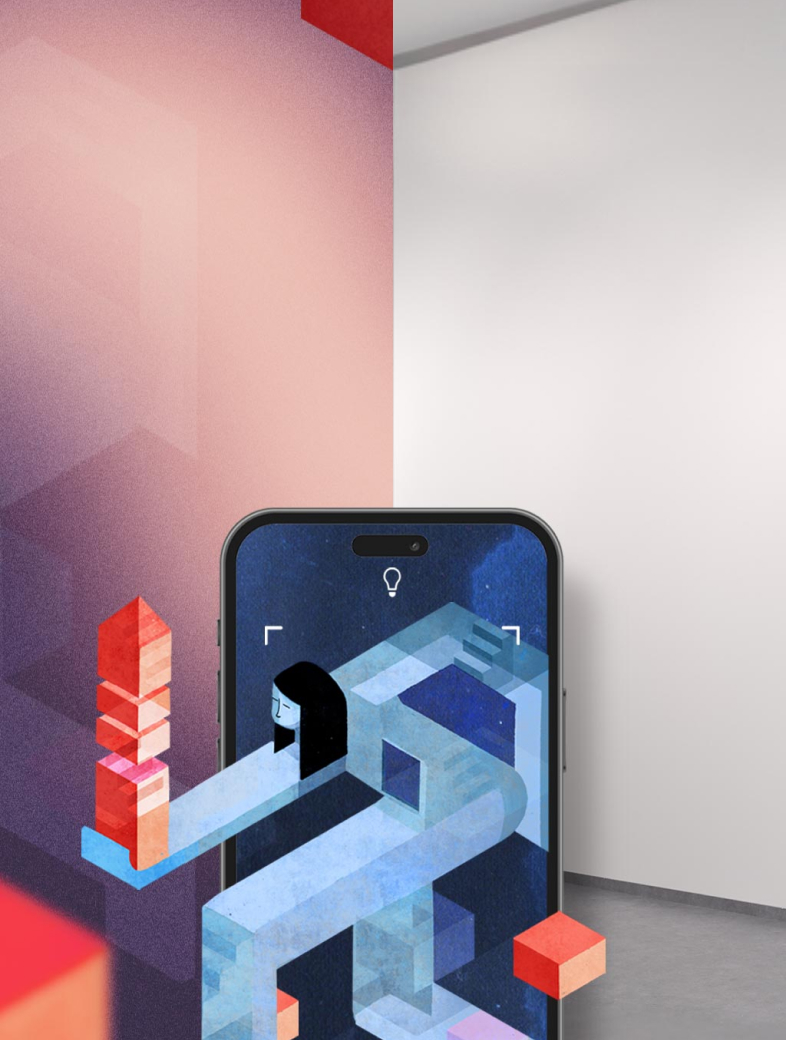Artist Interview: Eve Méthot
AR adds a sensory dimension to the act of looking
Augmented reality can bring a painting to life and allow it to tell its own story, and even allow you to participate in the conversation. Only recently, Artivive has published an open call to its artistic community to bring the masterpieces of the Paris Musées into augmented reality. Artists were asked to break the boundaries of the traditional media, by adding a digital layer to classical works of art with the Artivive tool.
In this series of interviews, we introduce you to the people behind the best submissions. This time we speak with Eve Méthot, a Montreal-based artist who creates digital art using augmented reality, video, and photography.

© Jean Chamberland
1. Can you tell us a bit about yourself?
Besides my classical music education, I have worked as a freelance journalist for many years. In 2000 I finally moved from written journalism to digital creation. For a project I realized for the National Gallery of Canada, I won a grand prize in 2000, Mim d’Or, awarded under the guidance of Hervé Fischer, holder of the Daniel Langlois Chair in Digital Technologies and Fine Arts at Concordia University and founding professor of the International Observatory of New Media at UQAM. In 2001, it was finally the big leap in education. Mandated to collaborate in setting up the professional and technical multimedia program at CÉGEP Édouard-Montpetit in Longueuil, Québec, I took part in the development of many of the program’s courses, notably in image processing, sound design, video, and animation. For almost 20 years, the passion for teaching and learning through technological transformations captivated me. Between 2014 and 2016, I organized conferences of international digital designers in Quebec by coordinating the holding of the OFFF Tour International QC in collaboration with the OFFF in Barcelona. Among my mentors: John Maeda, Paula Scher, Jared Tarbell, Joshua Davis, Sougwen Chung, Laurie Anderson.
2. How did you come across Artivive?
In the fall of 2019, I was in Budapest and I discovered during my walks in the districts of Pest, graffiti and architectural murals which, with an application linked to my cell phone, allowed me to see them come to life. I was captivated and enchanted. When I returned to Quebec, I introduced my students to my image processing classes. Artivive allowed me to register my students so that they could each create an AR work. This project was educational and very exciting. Since January 2020, I have had great pleasure in creating my own AR works with Artivive which is very easy to use.

3. What inspired you to take part in our open call?
I love painting, music, and art history that I have been exploring since childhood. My digital image processing and animation courses have always included a discovery segment of masterpieces: Picasso, Mirò, Dali, Matisse, Goya, Rembrandt, Bosch, etc. I have always thought it is important that my students should be able to develop their taste for painting, as well as their knowledge concerning the evolution of the history of the arts, essential in the development of projects in digital creation. The Open call from Artivive for the Museums of Paris immediately appealed to me.
4. Which masterpiece from the collections did you choose and what was the concept behind your augmented reality extension?
I choose “Rhythm n ° 2” 1938 by Robert Delaunay. This modern work spoke to me immediately. The play of colors, the rendering of light, and the rhythm that emerge from it: animating this painting was self-evident. Robert Delaunay was one of the pioneers of Orphism, a term coined by French poet Guillaume Apollinaire in 1912 to describe an offshoot of Cubism that emphasized the relationship between color, abstract form, and music. In “Rhythm No. 2”, he achieves a heightened level of abstraction characterized primarily by fractured space and color, the swirling disk-like forms reminiscent of a pulsing musical beat. Through my work, I sought to convey the spirit that had guided the artist. Robert Delaunay has always been interested in colors and their potential to make visible “the vibrational energy of light”. For me, it was important to respect the essence of the work and the will of the painter. After having designed my animation, I wondered if Delaunay would be proud of my interpretation … and I believe so.

5. What do you find most exciting about augmented reality art?
I like to create by letting the elements of my subconscious shine through. The symbolism in superimposed layers identifies my approach, my creative process. When I work with sound, video, animations, I play with transparencies, color and light overlays, contrasts. My animations are never “sharp” and “clean”. Always marked by suggestions, tracks of reflections, puzzles to discover and explore. I work in successive layers of emotions and ideas. Perfect for AR that makes this practice wonderfully.
For the public, AR adds a sensory dimension to the act of looking. It helps to revive works that have sometimes been forgotten. Imagine if Magritte, Vasarely, Escher or even Dali had been able to use augmented reality … Dali who painted the 3rd dimension even before the advent of computers!!
6. What are you working on now and what are your future plans?
I’m working on creating a cycle of digital works on endangered animals. Before the pandemic, I roamed places, camera in hand, to capture images of animals that are becoming rarer: in Quebec parks, zoos and others. I continue this activity. Then there is also the creation of a book with text and photos animated in AR and relating to the districts of the city of Montreal.
7. Any advice for those who would like to use augmented reality for their art practice?
Invent beyond the image. Tap into your audience’s imagination. Get people to think, get excited, and have fun.
Interested to create art in augmented reality? Sign up for free to our augmented reality tool.






